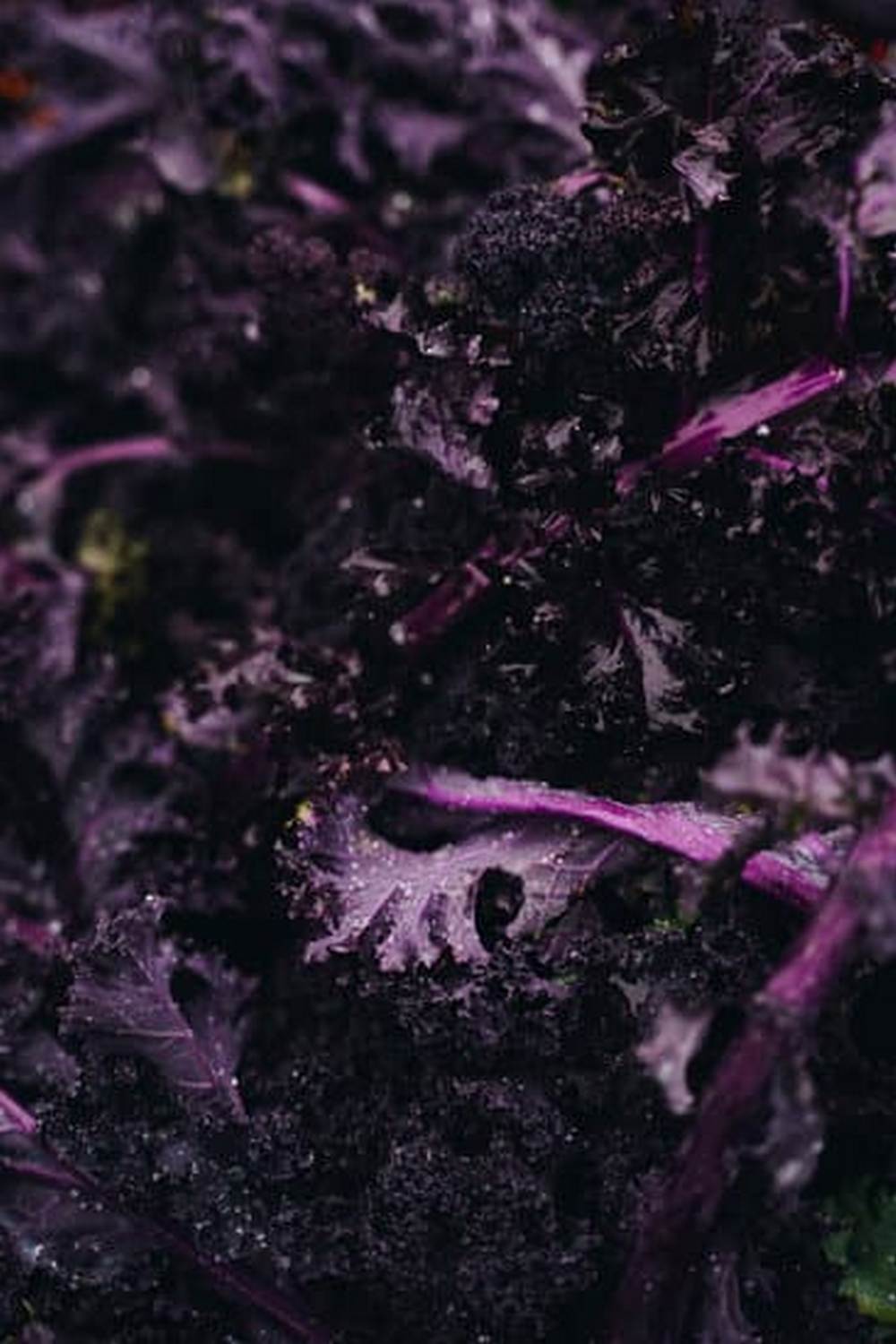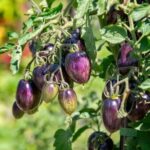Planting Upstate NY vegetable gardening can be a rewarding and fulfilling experience for anyone with a green thumb. The unique climate of Upstate New York provides an ideal environment for growing a wide variety of vegetables. From the lush landscapes to the rich soil, there are plenty of reasons why planting a vegetable garden in Upstate NY is worth it.
The beauty of vegetable gardening in Upstate New York lies in the opportunity to grow fresh, organic produce right at home. With the short growing season and unique climate, there are specific steps that can be taken to maximize the success of your garden. This article will explore the tips and techniques for successful vegetable gardening in Upstate NY, from choosing the right vegetables to dealing with pests and diseases.
Whether you’re new to gardening or have been doing it for years, discovering the joys of vegetable gardening in Upstate NY is an experience like no other. So let’s dive into the world of Upstate NY vegetable gardening and learn how to make the most of this rewarding endeavor.
Climate and Growing Season in Upstate NY
Upstate New York is known for its unique climate, which can present both challenges and opportunities for vegetable gardening. Understanding the climate of Upstate NY is essential for successful planting and harvesting. The region experiences a humid continental climate, characterized by cold winters and warm summers. The average growing season in Upstate NY ranges from 120 to 150 days, making it relatively short compared to other regions.
To take advantage of the short growing season in Upstate NY, gardeners can utilize techniques such as starting seeds indoors, using season extenders like row covers or cold frames, and selecting quick-maturing vegetable varieties. Additionally, being aware of the last expected frost date in the spring and the first expected frost date in the fall is crucial for planning and timing your planting schedule.
According to the United States Department of Agriculture (USDA) Plant Hardiness Zone Map, Upstate NY ranges from zone 4a to zone 5b. This means that gardeners should focus on selecting vegetables that are well-suited for cooler temperatures and shorter growing periods.
Some vegetables that thrive in this climate include lettuce, spinach, kale, carrots, beets, radishes, broccoli, and Brussels sprouts. By choosing the right vegetables based on the local climate and growing season, gardeners can increase their chances of a successful harvest.
| Climate Information | Details |
|---|---|
| Average Growing Season | 120-150 days |
| USDA Hardiness Zones | Zone 4a to Zone 5b |
Choosing the Right Vegetables for Upstate NY
When it comes to planting upstate ny vegetable gardening, one of the most important factors to consider is choosing the right vegetables that thrive in the unique climate of Upstate NY. With relatively short growing seasons and varying temperatures throughout the year, selecting the best vegetables for your garden is crucial for a successful harvest.
Some of the vegetables that have been found to thrive in the Upstate NY climate include leafy greens such as kale, spinach, and lettuce, as well as root vegetables like carrots and beets. These varieties are well-suited to the cooler temperatures and shorter growing season of Upstate NY, making them excellent choices for aspiring vegetable gardeners in the region.
Additionally, certain types of squash, such as zucchini and butternut squash, have also been successful in Upstate NY gardens. These vegetables are not only delicious and versatile in recipes but also adapt well to the climate and growing conditions of the region. It’s important to select vegetable varieties that are known to perform well in cooler climates and shorter growing seasons when planning your garden in Upstate NY.
Finally, it’s essential to consider the specific microclimates within your own garden space. Some areas may receive more sunlight or have different soil conditions than others, so take these factors into account when choosing which vegetables to plant where within your garden.
| Vegetable | Growing Season |
|---|---|
| Kale | Spring/Fall |
| Zucchini | Summer/Fall |
| Carrots | Fall/Winter |
Soil Preparation
When it comes to planting upstate ny vegetable gardening, proper soil preparation is crucial for the success of your garden. The unique climate of Upstate NY requires special attention to the quality of the soil in order to ensure optimal growth and production of vegetables. Here are some steps you can take to improve your soil quality for your vegetable garden:
1. Test your soil: Before planting, it’s important to test the pH levels and nutrient content of your soil. You can purchase a DIY soil testing kit or send a sample to a local agricultural extension office for analysis. This will help you determine if any amendments are needed to provide the best growing conditions for your vegetables.
2. Add organic matter: Incorporating organic matter such as compost, manure, and leaf mulch into the soil can improve its structure, drainage, and nutrient content. This will create a healthy environment for beneficial microorganisms and earthworms, which are essential for plant growth.
3. Mulch: Applying a layer of mulch around your vegetable plants can help regulate soil temperature, reduce moisture loss, suppress weed growth, and prevent erosion. Organic materials like straw, grass clippings, or wood chips make excellent mulch options.
By taking these steps to prepare your soil before planting upstate ny vegetable gardening, you will set the stage for a successful growing season and bountiful harvest of fresh produce from your Upstate NY garden.
Planting and Maintenance Tips
Having a successful vegetable garden in Upstate New York requires careful planning and proper maintenance throughout the growing season. Here are some essential planting and maintenance tips to help you get the most out of your garden:
- Choose the right location: Select a spot for your vegetable garden that receives at least 6-8 hours of sunlight per day. Make sure the area has good drainage to prevent waterlogging.
- Start with healthy soil: Test your soil to determine its pH and nutrient levels. Amend the soil as needed with organic matter, such as compost or aged manure, to improve its quality for vegetable growth.
- Planting techniques: Follow spacing recommendations on seed packets or plant labels to avoid overcrowding. Properly space your plants to ensure adequate airflow and reduce the risk of disease.
In addition to proper planting techniques, ongoing maintenance is crucial for a thriving vegetable garden in Upstate NY. Here are some tips for maintaining your garden throughout the season:
- Watering: Consistent watering is essential, especially during dry periods. Water deeply and less frequently to encourage strong root growth.
- Weeding: Regularly remove weeds from your garden beds to prevent them from competing with your vegetables for nutrients and resources.
- Fertilizing: Consider using organic fertilizers to provide essential nutrients to your plants without introducing harmful chemicals into the environment.
By following these planting and maintenance tips, you can enjoy a bountiful harvest of fresh, homegrown vegetables from your Upstate NY garden. Remember that gardening is a continuous learning process, so don’t be afraid to experiment and adapt your approach based on your observations and experiences throughout the season.
Dealing With Pests and Diseases
Common Pests and Diseases in Upstate NY Vegetable Gardens
Upstate NY vegetable gardens are susceptible to a variety of pests and diseases that can wreak havoc on your crops. Common pests in the region include aphids, cabbage worms, and potato beetles, while common diseases include powdery mildew, blight, and bacterial spot. It’s important to be vigilant and keep an eye out for any signs of infestation or illness in your plants.
Natural Methods for Controlling Pests and Diseases
When it comes to dealing with pests and diseases in your Upstate NY vegetable garden, it’s best to take a natural approach whenever possible. One effective method is companion planting, which involves planting certain crops next to each other to repel pests or attract beneficial insects. For example, marigolds can help deter nematodes, while basil planted near tomatoes can help improve their flavor and repel certain pests.
Another natural pest control method is using physical barriers such as row covers to protect your plants from insect damage. Additionally, practicing good gardening hygiene by removing diseased plants promptly and keeping the garden clean can help prevent the spread of diseases. When necessary, organic sprays made from ingredients like neem oil or garlic can be used to combat pests without harming beneficial insects or pollinators.
Seeking Professional Advice
If you’re struggling to control pests or diseases in your Upstate NY vegetable garden despite your best efforts, don’t hesitate to seek professional advice. Local agricultural extension offices often provide information on pest identification and management strategies tailored to the climate and conditions of Upstate NY.
In some cases, they may even offer workshops or consultations with horticultural experts who can provide personalized guidance for your specific gardening challenges. Additionally, joining a local gardening club or community organization can connect you with experienced gardeners who can offer valuable advice based on their own experiences with planting upstate ny vegetable gardening.
Harvesting and Preserving Your Produce
Once you’ve put in the hard work of planting upstate NY vegetable gardening, it’s time to reap the rewards of your labor by harvesting and preserving your produce. Knowing when and how to harvest your vegetables, as well as the best techniques for preserving them, is essential for making the most of your garden. Here are some tips to guide you through this exciting phase of your gardening journey.
Knowing When to Harvest
One of the keys to a successful harvest is knowing when your vegetables are ready to be picked. Different vegetables have different indicators that they are ripe and ready for harvesting.
For example, tomatoes should be fully colored with a slight give when squeezed, while carrots should be about 1 inch in diameter at the top. Researching each type of vegetable you have planted and learning their specific signs of ripeness will ensure you harvest them at the peak of flavor and nutrition.
Preserving Your Harvest
Once you’ve harvested your vegetables, it’s important to know how to preserve them for future use. There are several methods for preserving vegetables, including canning, freezing, pickling, and drying. The method you choose will depend on the type of vegetable and your personal preferences.
Canning is a popular method for preserving tomatoes and cucumbers, while freezing works well for green beans and broccoli. Pickling is a great way to preserve cucumbers and peppers, and drying is suitable for herbs like basil and oregano.
Enjoying the Fruits of Your Labor
By properly harvesting and preserving your produce, you can enjoy the fruits of your labor long after the growing season has ended. Whether you’re enjoying a homemade tomato sauce in the middle of winter or pickled cucumbers in the spring, there’s nothing quite like savoring food that you grew yourself. Taking the time to learn about proper harvesting and preservation techniques will allow you to fully enjoy the bounty of your Upstate NY vegetable garden year-round.
As an Upstate NY gardener. it’s crucial to understand these aspects so that you can truly make every planting season worth it by reaping what was grown throughout an extended period With proper knowledge on these two important parts in gardening considering that some plants need care until it’s harvested then preserved at times may require more work than expected but surely does not disappoint once tasted.
Resources for Upstate NY Vegetable Gardeners
In conclusion, vegetable gardening in Upstate New York offers a truly rewarding experience for those who are willing to put in the work. The unique climate and growing season of Upstate NY may present some challenges, but with the right knowledge and preparation, it is absolutely possible to have a successful and bountiful garden. By choosing the right vegetables, properly preparing the soil, and implementing effective planting and maintenance techniques, you can enjoy a thriving vegetable garden in this region.
One of the most important aspects of successful vegetable gardening in Upstate NY is having access to the right resources and support. Whether it’s local organizations, gardening clubs, or online communities, there are plenty of places where you can find valuable information and advice from experienced gardeners. These resources can provide guidance on everything from selecting the best vegetables for your garden to dealing with common pests and diseases that are specific to the region.
As you embark on your vegetable gardening journey in Upstate New York, remember that patience and perseverance are key. The joy of harvesting your own fresh produce and preserving it for future use makes all the effort worthwhile.
With the proper care and attention, your vegetable garden in Upstate NY has the potential to thrive and provide you with an abundance of healthy, homegrown food. So roll up your sleeves, get your hands dirty, and enjoy all the wonders that Upstate NY vegetable gardening has to offer.
Frequently Asked Questions
What Month Should I Plant My Vegetable Garden?
The best month to plant your vegetable garden depends on the climate and the specific vegetables you want to grow. In general, for most regions in the US, late spring to early summer is a good time to start planting.
What Are the Easiest Crops to Grow in NY?
Some of the easiest crops to grow in New York include tomatoes, peppers, lettuce, cucumbers, and zucchini. These are relatively low-maintenance and well-suited to the climate and growing conditions in NY.
When Should I Start My Seeds in NY?
In New York, the ideal time to start seeds varies depending on the specific plant but generally begins in late winter or early spring. Starting seeds indoors allows them to mature before being transplanted outdoors after the last frost date has passed.

If you’re looking to get into vegetable gardening, or are just looking for some tips on how to make your current garden better, then you’ve come to the right place! My name is Ethel and I have been gardening for years. In this blog, I’m going to share with you some of my best tips on how to create a successful vegetable garden.





